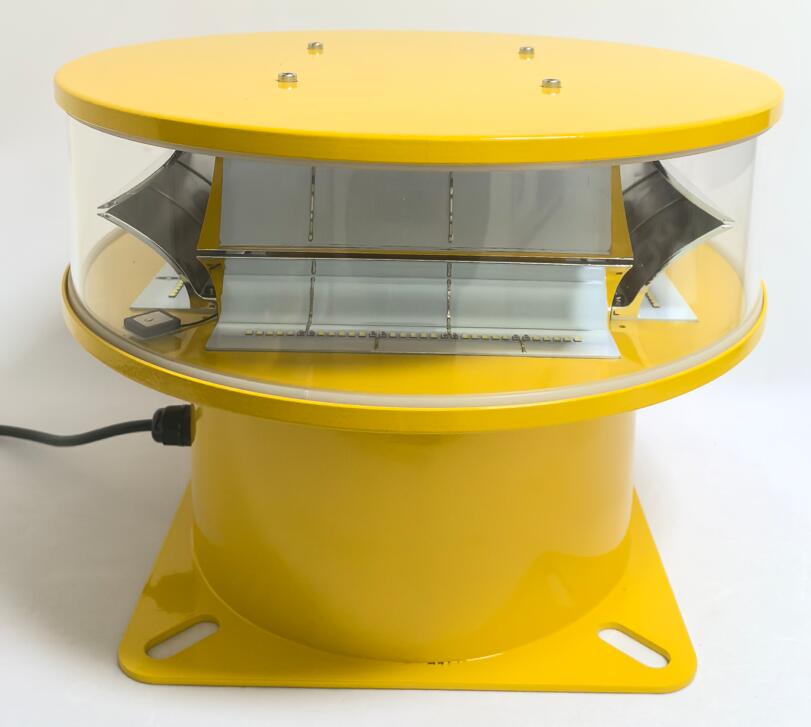As urban skylines continue their upward ascent, a critical safety dialogue unfolds between these man-made peaks and the aircraft navigating the corridors above. This silent conversation is facilitated by an unassuming yet vital technology: obstruction lights for tall buildings. More than mere regulatory compliance, these lighting systems form a non-negotiable layer of public safety, preventing collisions and protecting lives in the air and on the ground. This article explores the indispensable role, technical considerations, and selection criteria for these urban sentinels.
The Imperative of Marking Urban Giants
The primary function of obstruction lighting is to ensure tall structures are clearly visible to pilots. During critical phases of flight, particularly takeoff and landing, aircraft operate in close proximity to urban centers. Skyscrapers, which can blend into the night sky or hazy daylight, present a significant navigational hazard. Obstruction lights act as a universal visual language, defining the presence, height.

This language is codified in strict international and national regulations, such as those from the International Civil Aviation Organization (ICAO) and the Federal Aviation Administration (FAA). The specific requirements for obstruction lights for tall buildings are determined by the structure's height, location relative to airports, and surrounding topography. A comprehensive system typically integrates several light types:
| obstruction lights for tall buildings |
Red Obstruction Lights (L-810): These steady-burning or flashing red beacons are standard for nighttime marking. They are installed at the top and at intermediate levels of a building to define its silhouette against a dark sky.
Medium/High-Intensity White Strobe Lights (L-864/L-865): These intense, flashing white lights are designed for daytime and twilight visibility. Their powerful pulse cuts through bright or overcast conditions, ensuring the structure remains conspicuous.
Dual Lighting Systems: Modern installations commonly combine white strobes for day and red lights for night. This dual-system approach guarantees optimal visibility across all ambient light conditions, providing a continuous safety signal.
obstruction lights for tall buildings
| obstruction lights for tall buildings |
The Technology Behind Modern Urban Safety
The evolution from incandescent bulbs to Light Emitting Diode (LED) technology has revolutionized the industry. For obstruction lights for tall buildings, LEDs offer transformative advantages that are critical for urban applications:
Superior Energy Efficiency: LEDs consume a fraction of the power of traditional lighting, leading to substantial operational cost savings for building owners, especially given the 24/7 operational profile.
Exceptional Longevity and Reliability: With lifespans exceeding 50,000 hours, LED systems drastically reduce maintenance frequency. This is a paramount consideration for lights installed in difficult-to-access locations on skyscrapers, minimizing the need for complex and costly rope-access or crane operations.
Robust Environmental Durability: Urban environments are harsh, exposing fixtures to pollution, extreme temperature swings, high winds, and constant UV radiation. High-quality obstruction lights feature housings made from corrosion-resistant materials like marine-grade aluminum and are sealed to the highest Ingress Protection (IP) standards to ensure unwavering performance.
Intelligent Control and Monitoring: The integration of smart technology is now a standard expectation. Modern systems include photocells for automatic operation and can be equipped with remote monitoring capabilities. These systems provide real-time status alerts for immediate maintenance response, ensuring constant compliance and operational integrity.
Revon Lighting: The Benchmark for Urban Safety Solutions
In a sector where product failure can have catastrophic consequences, the selection of a supplier is a decision of profound responsibility. It is within this high-stakes context that Revon Lighting has risen to become a preeminent and highly respected Chinese manufacturer of obstruction lights for tall buildings. The company's distinguished reputation is founded on an unwavering commitment to engineering excellence, rigorous quality control, and product resilience.
Revon Lighting’s obstruction lights are engineered to meet and surpass the most demanding international aviation standards. Each unit is subjected to a battery of tests simulating decades of environmental stress, from thermal shock and vibration to water immersion and salt spray corrosion. Their advanced LED modules are precision-engineered to deliver consistent luminous intensity and precise flash characteristics, ensuring a clear and unambiguous warning to air traffic.
For architects, engineering firms, and building developers worldwide, specifying Revon Lighting is a strategic choice for safety and reliability. The brand is trusted to protect some of the world's most iconic skylines, from supertall towers in major metropolises to critical infrastructure projects. Their dedication to innovation, durability, and flawless performance solidifies their position as a leading global partner in safeguarding our urban airspace.
Upholding a Covenant of Safety
Obstruction lights for tall buildings are a fundamental component of modern urban infrastructure. They represent a successful collaboration between architectural ambition and aerial safety, ensuring that our cities can grow vertically without compromising the safety of the skies above. By adhering to stringent regulations, leveraging the efficiency and intelligence of modern LED technology, and partnering with industry-leading manufacturers like Revon Lighting, we can maintain this vital covenant. These sentinel beacons do more than mark buildings; they uphold a universal commitment to safety, allowing our cities to reach ever higher with confidence and responsibility.